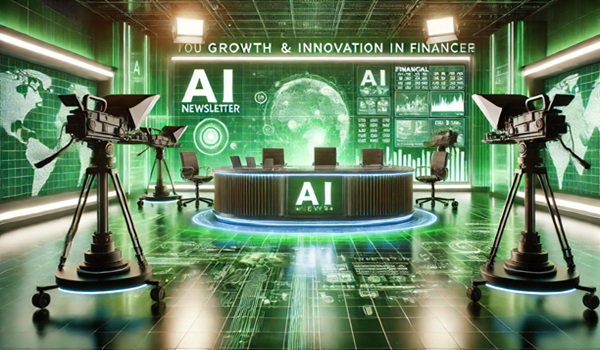By Greg Woolf, AI RegRisk Think Tank
AI Soars Free of Regulations
California Governor Gavin Newsom recently vetoed Senate Bill 1047, which aimed to provide guidelines for AI development. This hands-off approach is a win for innovation, but it has hidden costs—most notably, its environmental impact. As the pace of AI adoption continues to grow exponentially, companies pushing the AI boundaries will drive uncontrolled energy consumption as more powerful models are developed and deployed. This increased demand puts a strain on natural resources and heightens the carbon footprint of AI technologies.
The Energy Cost of AI Queries
AI models consume significant energy. Each ChatGPT query costs about $0.0003 in electricity, at 10 million queries per day, and this is the annual equivalent of powering a small city like Monterey, California. With its projected growth for the next 5 years, ChatGPT’s energy consumption will match the energy consumption of a large city like Washington, D.C. As AI is adopted across industries, the scale of energy use will only rise, raising concerns about whether our resources can sustain this growth without worsening climate change.
Investments in AI Infrastructure
OpenAI recently raised $6.6 billion – the largest funding round in history for a tech company – to boost AI infrastructure. Half of this raise is budgeted towards compute, power and energy needs. Microsoft recently made headlines by contracting the exclusive use of the previously defunct Three Mile Island nuclear reactor to power its data centers, highlighting the scale of energy required for AI operations. Meanwhile, OpenAI’s CEO, Sam Altman, pitched a trillion-dollar “Manhattan Project 2.0” plan to the U.S. Government to build infrastructure for Artificial General Intelligence (AGI) as a strategic U.S. asset.
China’s AI Power Initiative
The quest for power is not just here in the US, globally countries leading the AI charge are heavily investing in infrastructure, recognizing AI as both a technological and geopolitical frontier. China is making significant strides in AI infrastructure through its ‘East Data West Computing’ initiative. This national strategy will build ten high-density, energy-efficient data center clusters connected by smart grids and renewable energy sources across the country. Their goal is to create a massive integrated network capable of supporting AI’s growing demands. The computing power generated by the Chinese clusters is equivalent to the annual energy consumption of a major U.S. city like San Francisco, reflecting China’s commitment to powering its advantage in the AI race.
The Environmental Price of Unrestricted Growth
The drive for more powerful AI means higher energy consumption, putting a strain on power grids and often relying on non-renewable sources. Data centers require massive amounts of cooling, adding to energy demands. The production of hardware also depends on rare earth metals, contributing to environmental degradation. As AI’s unrestricted growth continues, it will be crucial for central authorities to devise national strategies that address the demands, costs and environmental impact.
A Call for Sustainability in AI Development
Governor Newsom’s veto may fuel innovation, but it also delays critical discussions on sustainability. Future regulations should address not only ethical concerns but also the environmental impact of AI. Policymakers, industry leaders, and researchers must collaborate on solutions that balance advancement with responsibility. Investments in renewable energy, energy-efficient AI models, and public pressure for greener practices are vital to ensuring AI’s future benefits society and the environment. The goal is not to stifle innovation but to guide it toward sustainable outcomes before energy demands and environmental consequences become unmanageable.
 Greg Woolf is an accomplished innovator and AI strategist with over 20 years of experience in founding and leading AI and data analytics companies. Recognized for his visionary leadership, he has been honored as AI Global IT-CEO of the Year, received the FIMA FinTech Innovation Award, and was a winner of an FDIC Tech Sprint. Currently, he leads the AI Reg-Risk™ Think Tank, advising financial institutions, FinTech companies, and government regulators on leveraging AI within the financial services industry. https://airegrisk.com
Greg Woolf is an accomplished innovator and AI strategist with over 20 years of experience in founding and leading AI and data analytics companies. Recognized for his visionary leadership, he has been honored as AI Global IT-CEO of the Year, received the FIMA FinTech Innovation Award, and was a winner of an FDIC Tech Sprint. Currently, he leads the AI Reg-Risk™ Think Tank, advising financial institutions, FinTech companies, and government regulators on leveraging AI within the financial services industry. https://airegrisk.com








